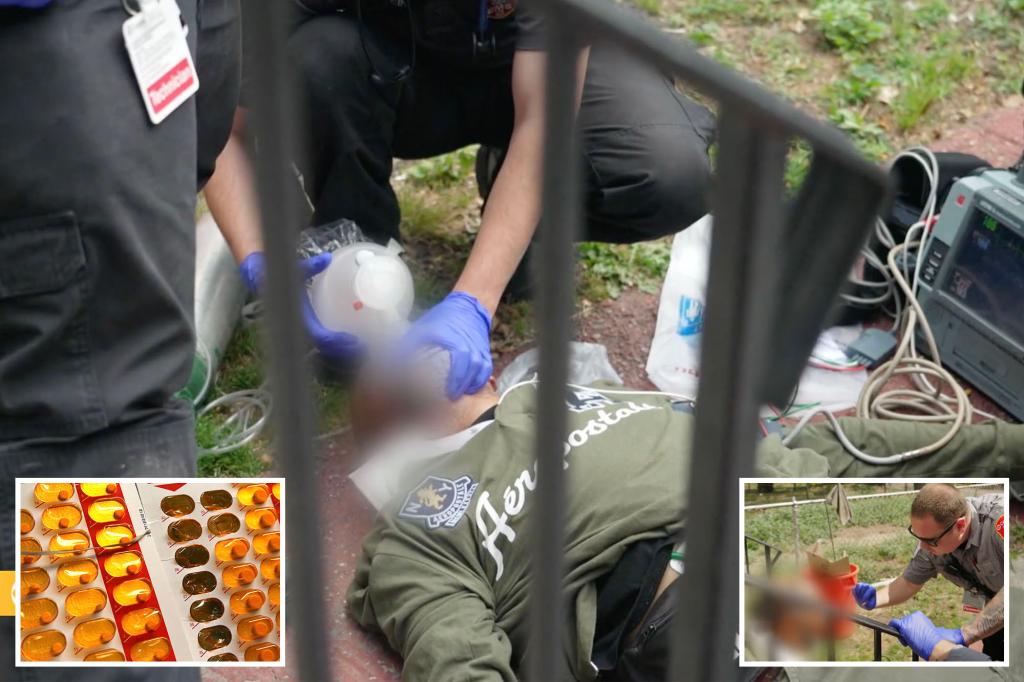In the nationwide battle against opioid abuse, New Jersey paramedics have found success with a treatment-focused approach.
Camden County, in southwestern New Jersey near Philadelphia, has one of the highest overdose and drug-related death rates in the state.
When responding to an overdose, paramedics use naloxone, a drug that reverses the effects of opioids — but it’s just a temporary fix for those addicted to the drugs.
First responders “would come in at 7:00 in the morning … reverse an opioid overdose and, by the end of their shift, they were going out and reversing the same patient with another opioid overdose,” Dr. Rick Rohrbach, director of EMS at Cooper University Health Care, told CBS News last week.
Now, when an overdose has been reversed with naloxone and the patient is alert and responsive, it’s “game on,” said Dr. Gerard Carroll of Cooper University Health Care.
Paramedics offer the patient buprenorphine, or “bupe,” a medication that works like methadone to curb addiction to opioids.
If the patient accepts the bupe, the EMS team stays with them until the medication takes effect.

Patients revived with naloxone often refuse to go to an emergency department because they are experiencing withdrawal. Bupe helps relieve those symptoms.
Once they visit the local hospital and connect with Cooper’s addiction medicine team for treatment, they’re less likely to relapse.
“We basically ask what their needs are that day,” including food, clothes and shelter, said Dr. Kaitlan Baston, head of Cooper’s Center for Healing. “If you don’t have your basic needs met, it’s really hard to engage well in therapy.”
“We saw paramedics and EMTs and frontline workers, police officers, nurses … giving them emergency naloxone over and over and over again, and they felt like the patients were failing.” Baston continued. “But we never gave those patients treatment.”
Now, Baston says, people are getting help with with housing and employment resources as part of their revised approach to treating opioid addiction.

In a recent study published in the Annals of Emergency Medicine, researchers found that compared with a regular ambulance, an EMS response with a bupe-equipped ambulance was likely to have greater luck engaging a patient in opioid treatment within 30 days.
“It’s not a solution to the opioid crisis, so I don’t want to overstate anything,” Carroll said. “But when patients take (bupe) … about 30% to 40% make their first and second appointments and are in treatment at about 30 days.”
The treatment approach has received nationwide recognition for Camden County’s success.
Last year, Cooper University won the California Paramedic Foundation’s Nicholas Rosecrans Award for creating and launching the first EMS-administered buprenorphine program in the US.
“Their program is a vibrant example of EMS prevention programs that flip the traditional reactive 9-1-1 system on its head by preventing injury and illness before they occur,” California Paramedic Foundation Director John Ehrhart said in a Cooper health blog.
𝗖𝗿𝗲𝗱𝗶𝘁𝘀, 𝗖𝗼𝗽𝘆𝗿𝗶𝗴𝗵𝘁 & 𝗖𝗼𝘂𝗿𝘁𝗲𝘀𝘆: nypost.com
𝗙𝗼𝗿 𝗮𝗻𝘆 𝗰𝗼𝗺𝗽𝗹𝗮𝗶𝗻𝘁𝘀 𝗿𝗲𝗴𝗮𝗿𝗱𝗶𝗻𝗴 𝗗𝗠𝗖𝗔,
𝗣𝗹𝗲𝗮𝘀𝗲 𝘀𝗲𝗻𝗱 𝘂𝘀 𝗮𝗻 𝗲𝗺𝗮𝗶𝗹 𝗮𝘁 dmca@enspirers.com


